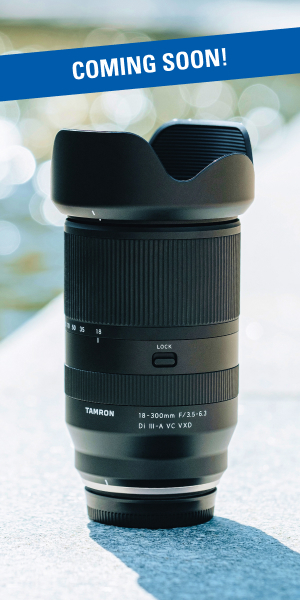Por qué la luz de la mañana y el Tamron 35-150mm F2-2.8 son mi combinación ideal para retratos espectaculares en interiores
Como fotógrafo, fotografiar retratos con la luz del amanecer es una de mis formas favoritas de crear imágenes cinematográficas y llenas de vida. La luz es la verdadera narradora de cualquier imagen: la forma en que inunda una habitación, besa un pómulo o se derrama por una pared puede marcar la diferencia entre algo plano y algo inolvidable.
Esa ventana dorada justo después del amanecer puede transformar un espacio cotidiano en pura magia, sobre todo cuando se trabaja con fotografía de interiores con luz natural. Y cuando quiero capturar esa sensación en interiores, recurro a la Tamron 35-150 mm F/2-2,8 Di III VXDmi objetivo preferido para retratos naturales y espectaculares con poca luz.
Por el colaborador invitado: André Costantini
Lo que aprenderá en este post
- Cómo utilizo la luz de primera hora de la mañana para crear retratos cinematográficos en interiores
- Por qué el ángulo de la luz crea o rompe el ambiente
- Cómo expongo las luces en escenas con mucho contraste
- Consejos para fotografiar en espacios oscuros
- Mi enfoque de la utilización de ventanas como parte de la escena
- Por qué el tiempo lo es todo con la luz natural
- Técnicas de iluminación para fotografía de interior que puede aplicar en cualquier lugar
Por qué me encanta el Tamron 35-150mm F2-2.8 para retratos con poca luz en interiores
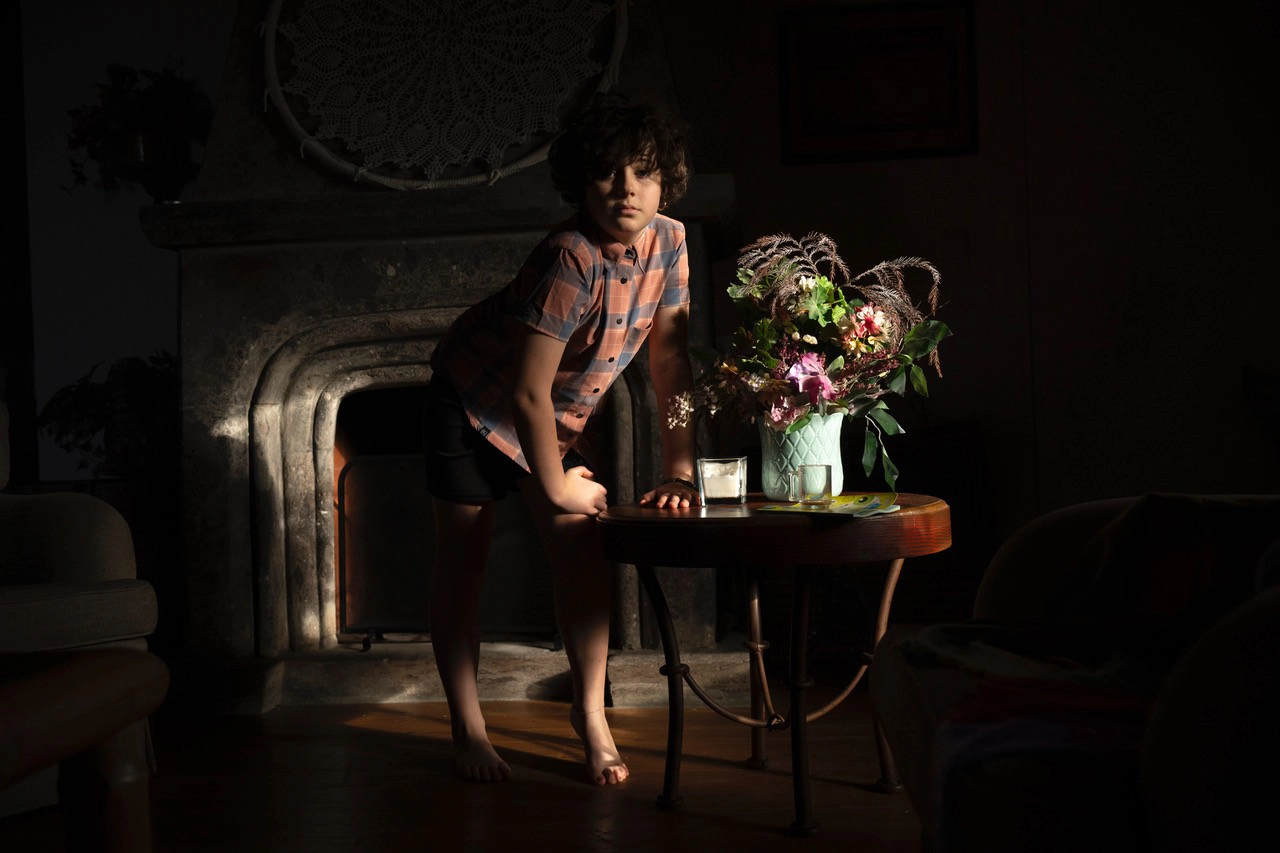
El objetivo Tamron 35-150 mm F2-2,8 para Montura Sony E (también disponible para Montura Nikon Z) se ha convertido en uno de mis objetivos de confianza, especialmente para retratos en interiores con luz natural.
He aquí por qué me funciona tan bien:
- Gran apertura: Con una apertura máxima de f/2 en el gran angular y de f/2,8 en el teleobjetivo, puedo disparar cómodamente con poca luz y obtener detalles nítidos y un desenfoque cremoso del fondo.
- Increíble alcance del zoom: Este objetivo me permite pasar de retratos ambientales amplios a primeros planos ajustados sin mover los pies.
- Impresionante calidad de imagen: Incluso con la máxima apertura, consigo una nitidez de borde a borde y una caída del fondo realmente agradable.
- Flexibilidad creativa: La compresión en las distancias focales más largas me da muchas opciones narrativas en cuanto a cómo encuadrar y aislar el sujeto.
Si buscas el mejor objetivo para retratos en interiores, éste cumple todos los requisitos.
Mis consejos favoritos para fotografiar con luz matinal
CONSEJO 1. Presta atención al ángulo de la luz para añadir dramatismo
El ángulo de la luz es clave cuando trabajo con el sol de primera hora de la mañana. Si disparo con la luz detrás de mí, el sujeto está iluminado uniformemente, lo que puede ser bueno para los detalles, pero a veces es demasiado plano.
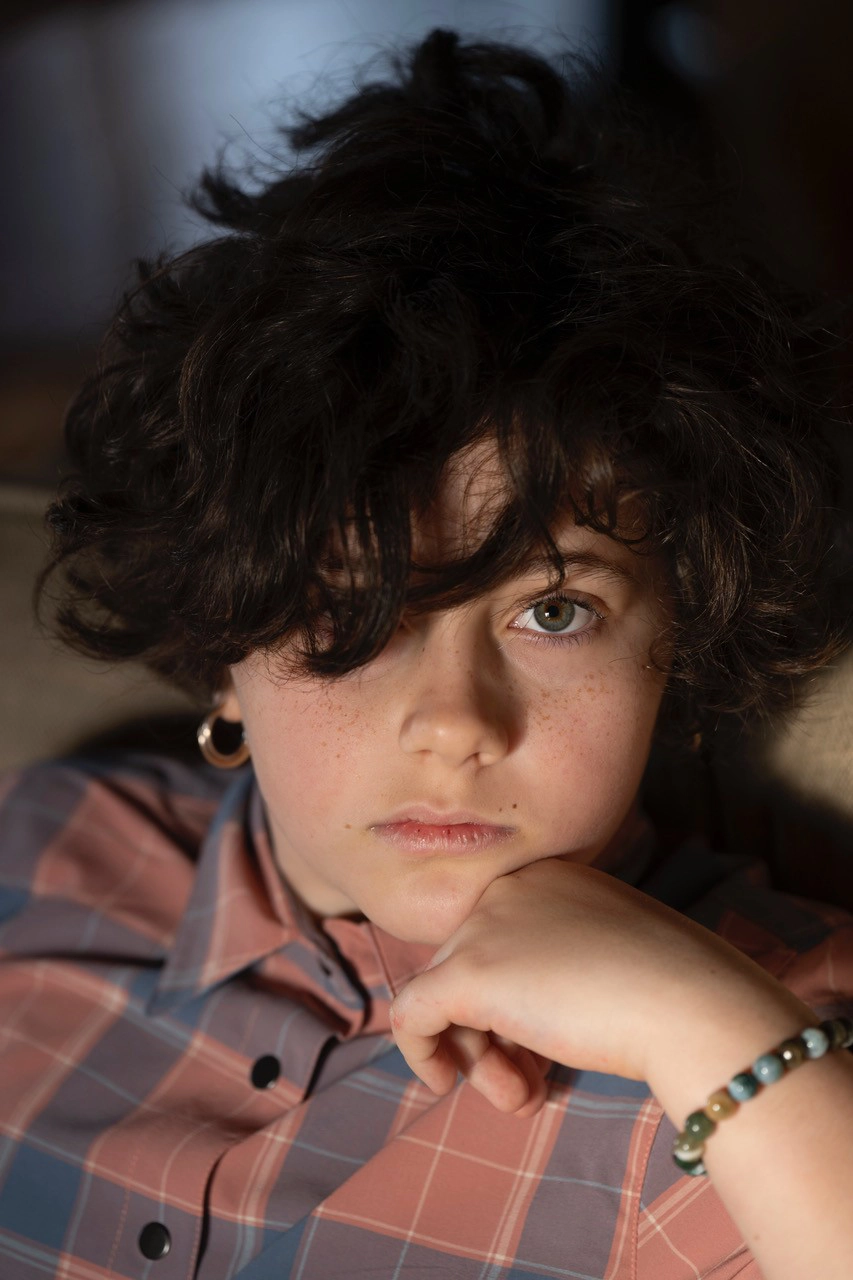
Prefiero cambiar el ángulo para que la luz incida desde un lado o incluso desde detrás del sujeto. Así se crea contraste, sombras y una imagen más dramática y emotiva, perfecta para capturar retratos llenos de humor.

SUGERENCIA 2. Utilizar las ventanas como elemento de encuadre
A primera hora de la mañana, la diferencia de exposición entre el interior y el exterior suele ser mínima, por lo que puedo incluir ventanas en la composición sin fundir las luces.
Utilizo los marcos de las ventanas como elementos gráficos o disparo con la luz que entra a través de ellos para añadir contexto y textura. Resulta natural y añade interés visual sin necesidad de equipo ni edición adicionales. Cuando las condiciones son las adecuadas, la suave luz natural de una ventana puede realzar un retrato de forma maravillosa.
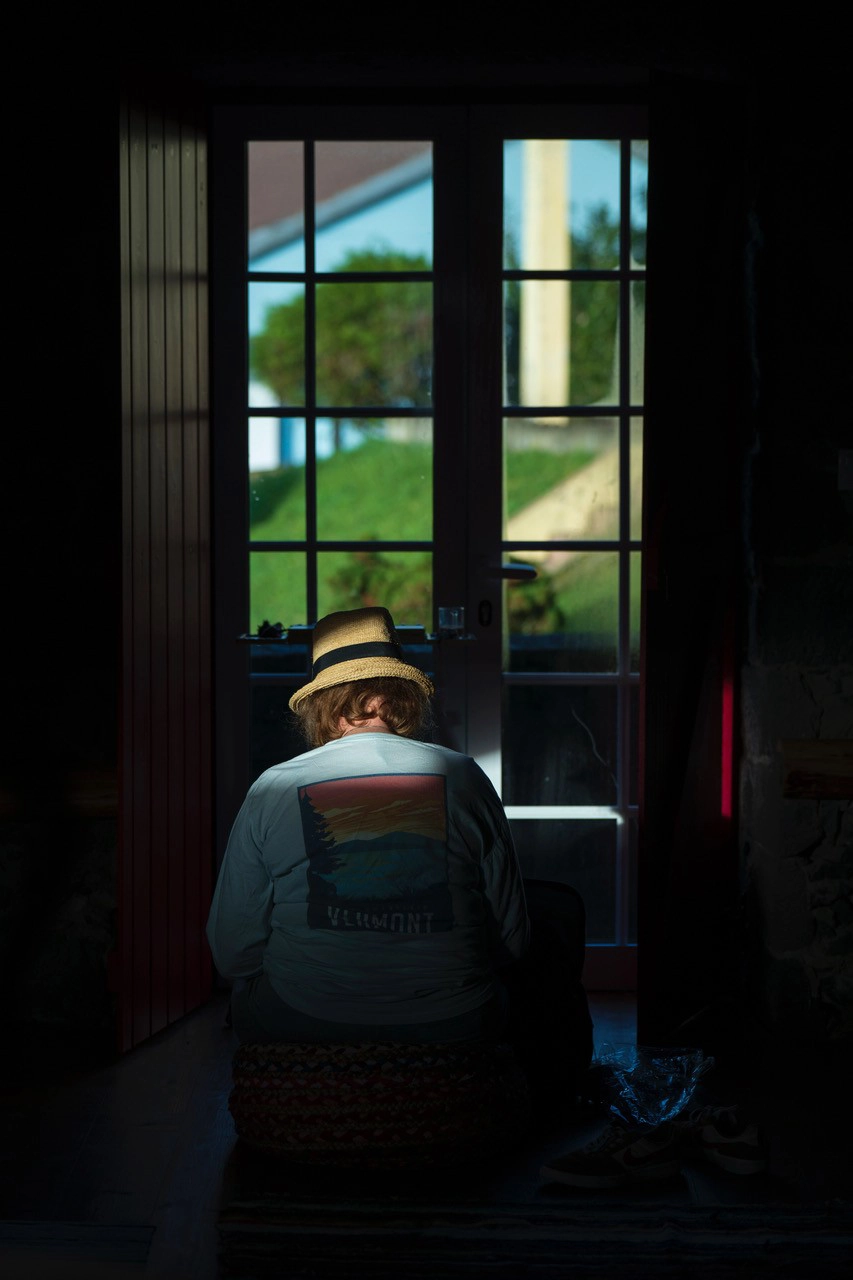
CONSEJO 3. Muévete rápido porque la luz se mueve rápido
Una cosa que he aprendido es que la luz natural no te espera. Puede cambiar radicalmente en cuestión de minutos. Así que si veo una luz bonita, empiezo a disparar enseguida.
A veces tengo suerte y la cosa mejora, pero no cuento con ello. He perdido momentos por dudar, y ahora intento estar preparado y seguir disparando mientras la luz es buena. Cuando se fotografía con luz matinal, el momento lo es todo.
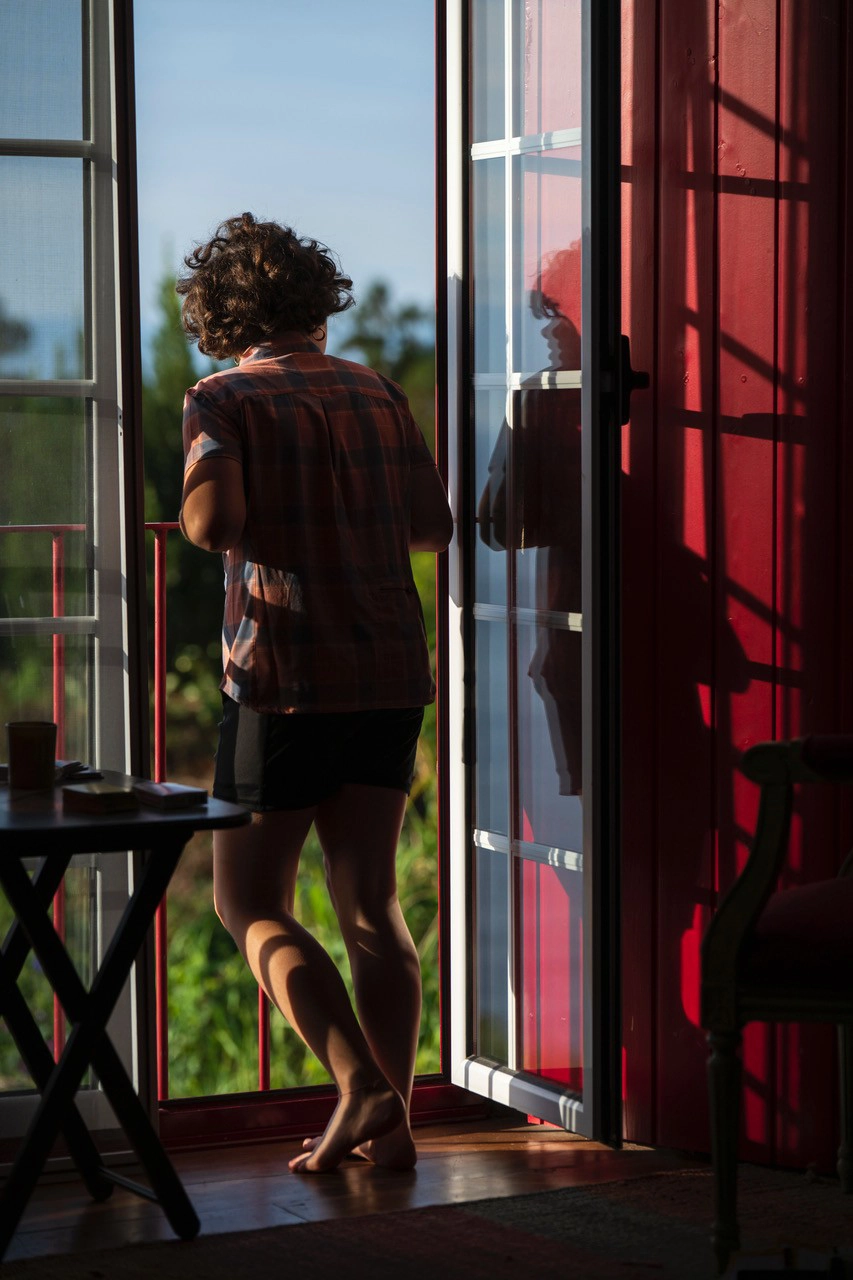
Naturaleza muerta, ¿misma luz? Aplique estas técnicas de retrato
CONSEJO 4. Exponga siempre para las altas luces
La luz temprana puede ser intensa, con luces brillantes y sombras profundas. Si dejo que la cámara mida la escena, a menudo sobreexpone y aplana la imagen.
Así que disparo en modo manual o subexpongo sólo un poco para conservar las altas luces. Quiero mantener el detalle donde cae la luz y dejar que las sombras se oscurezcan. Ese contraste es lo que da alma a la imagen. Este es uno de mis trucos de exposición en modo manual para retratos con poca luz, también perfecto para imágenes de naturaleza muerta.
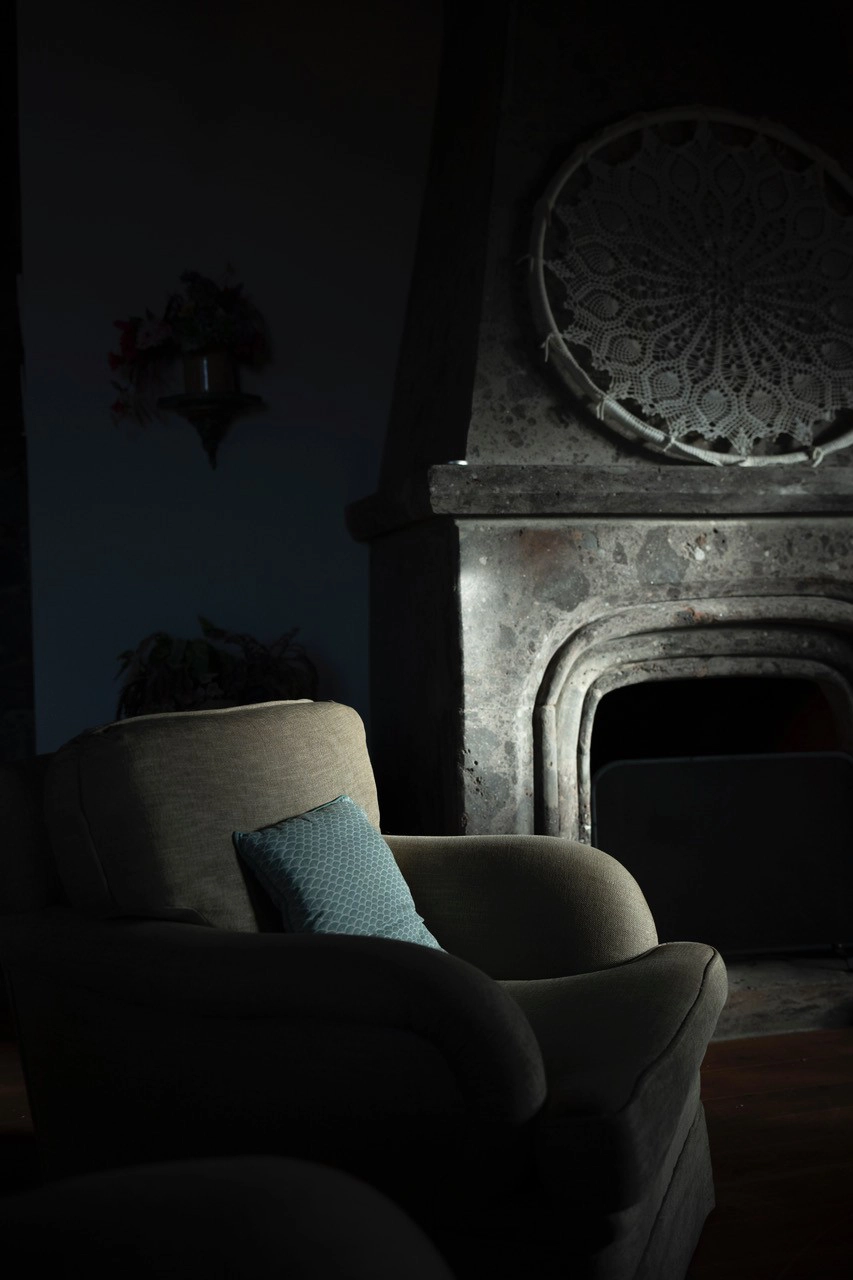
CONSEJO 5. Busque habitaciones oscuras o hágalas oscuras
La habitación en la que tomé estas imágenes tenía paredes de piedra que no reflejaban mucha luz, lo que ayudó a crear una sensación de mal humor.
Si trabajo en una habitación luminosa, utilizo telas o fondos oscuros para absorber parte de la luz. Cuanto más oscuro sea el espacio, más pronunciada será la luz direccional, lo que me proporciona más profundidad y contraste con los que jugar. Esta es una de mis técnicas favoritas de iluminación en interiores para controlar el contraste tanto en retratos como en bodegones.
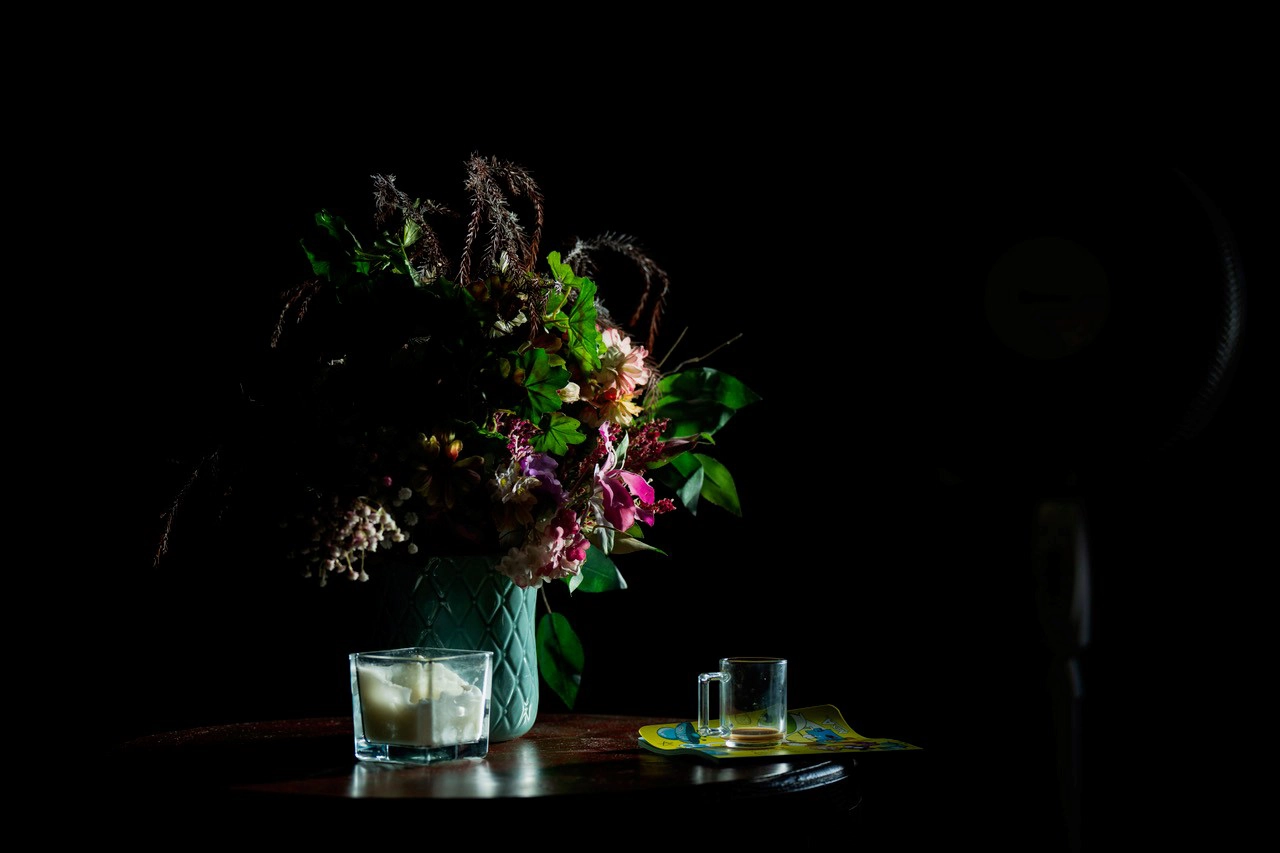
Reflexiones finales
Hay algo mágico en fotografiar retratos (o naturalezas muertas) con la luz del amanecer. Es sincera, cambiante y llena de profundidad, sobre todo cuando se combina con un objetivo como el Tamron 35-150 mm F2-2,8 que me permite trabajar con rapidez y fluidez.
Tanto si quieres capturar retratos llenos de humor como experimentar con la iluminación creativa para retratos, las primeras horas de la mañana ofrecen infinitas oportunidades para obtener imágenes atractivas con luz natural.

